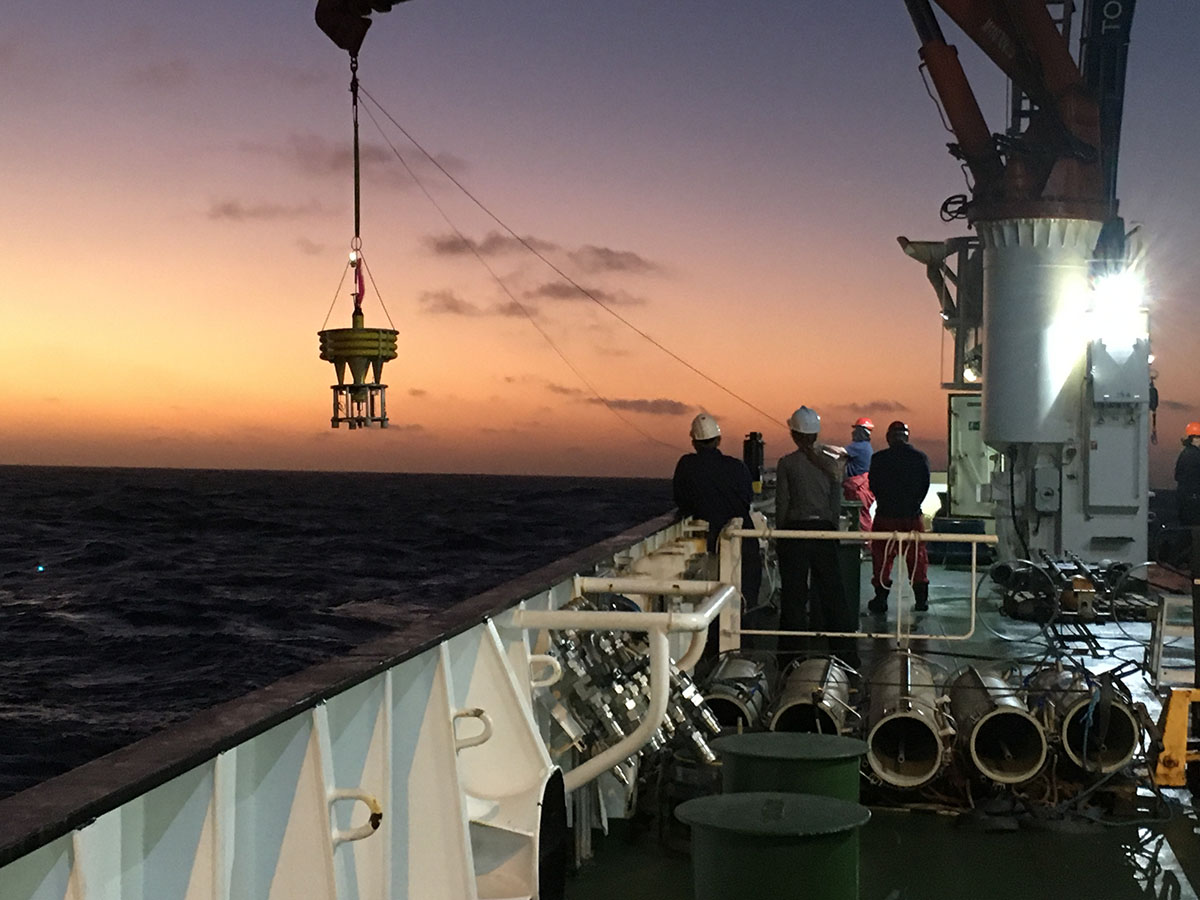Biology’s Role In ocean Carbon Storage – a gap analysis
Principal Investigator: Professor Stephanie Henson National Oceanography Centre
The ocean is a large carbon reservoir which contains fifty times the amount of carbon in the atmosphere. Biological processes contribute to carbon storage in the ocean on climate-relevant timescales (hundreds to thousands of years). Marine phytoplankton, which are drifting microscopic plants, use sunlight and carbon dioxide in the upper ocean to form their biomass, also called organic matter. When phytoplankton die they sink into the ocean interior, moving organic carbon deeper in the water column and the deeper it goes the longer it will remain out of contact with the atmosphere. This process, often called the biological carbon pump, helps to regulate our climate and without biology in the ocean it has been shown that atmospheric carbon dioxide levels could be 50% greater than what they are today.
In this project we will examine three areas that significantly affect the biological influence on global ocean carbon storage and are hindering progress on predicting ocean carbon storage in the future.
Aim
First, is understanding how the buffering capacity of seawater changes, driven by phytoplankton that produce chalk shells, which ultimately affects CO2 uptake. Second, is understanding the efficiency and variability of the primary production of organic matter by phytoplankton and third, is understanding how much of this organic matter reaches the interior ocean, which tells us how much carbon has been respired during the transit from the upper ocean.
We will use three metrics to examine these areas: 1) regional 3-dimensional fields of the buffering capacity, 2) the net primary production of organic matter and 3) how efficiently organic matter is transferred between the upper ocean and the ocean interior. These three factors will affect the magnitude and efficiency of carbon storage by the biological pump and the dominant factor may change depending on the region or with climate change.
Earth system models have differing simplistic representations of the biological carbon pump due to the computational costs of running global models far into the future. The suite of models that contribute to the Intergovernmental Panel on Climate Change (IPCC) reports do not agree on the magnitude or direction of change for ocean carbon storage under future climate scenarios. This means we have low confidence for our future projections, which is further impeded by a growing discrepancy between models and observations.
This project will identify the gaps in our understanding and highlight model limitations for each of the three areas outlined above. We will achieve this by reviewing the current literature to identify key processes and will assess the uncertainty in the three metrics to capture changes in the buffering capacity, primary production of organic matter and the amount of interior respiration. We will determine how this appears to impact future ocean carbon storage in different models with their varying representations of the biological carbon pump. This will aid in identifying the observations that are needed to improve our grasp of the processes controlling the biological carbon pump, which will in turn allow for improved model representations and predictions. We aim to highlight priority observations that focus on the processes that are significant contributors to biological carbon storage, have the potential to be widely measured to allow robust model representations, can be feasibly included into models and are relevant over long timescales and globally. We will also carry out an expert assessment by asking the international scientific community to rank which processes are the most significant for ocean carbon storage and climate feedbacks. Our analysis and the survey results will inform recommendations for future field programmes based on the community’s ability to observe and measure key processes and the likelihood of being able to include them in models.
